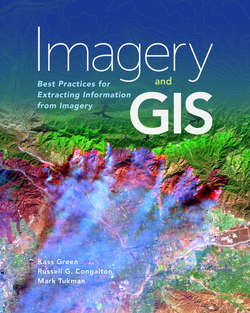Читать книгу Imagery and GIS - Kass Green - Страница 68
На сайте Литреса книга снята с продажи.
Will the imagery be shared with other organizations?
ОглавлениеThe need to share imagery with others will affect the type of imagery license chosen. High- and very-high-spatial-resolution satellite imagery often has some sort of license restriction, although licenses that allow some sharing (e.g., within an agency, or across federal agencies) are common. If the imagery is to be shared with multiple users both inside and outside of your organization, it might be best to focus on nonlicensed, unrestricted imagery available in the public domain, or to acquire new imagery from an organization that does not license restrict their products. For example, a great deal of the high-spatial-resolution imagery captured over the United States is in the public domain and is not license restricted. This includes NAIP 1-m multispectral imagery and even higher-spatial-resolution-imagery funded and collected for many local and regional government agencies. Moderate-resolution imagery is also available in the public domain worldwide from either the Sentinel (10 to 20 m) (https://sentinel.esa.int/web/sentinel/sentinel-data-access) or Landsat (30 m) (http://landsat.usgs.gov/Landsat_Search_and_Download.php) programs, including Landsat’s archive of more than 40 years. NOAA weather data and NASA earth science data are also freely accessible and shareable. Aside from military systems or imagery captured by UASs, access to high- or very-high-resolution imagery outside of the United States is usually available only from commercial satellite companies who restrict sharing of their imagery through licensing.
